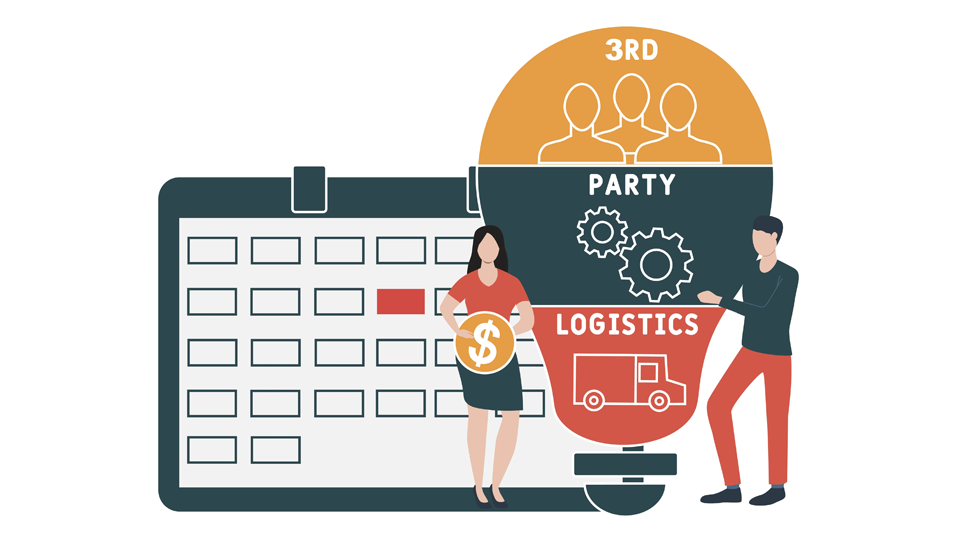Customer-Centric Returns: Transforming the 3PL Experience
Returns play a pivotal role in the logistics industry, wielding a profound impact on customer satisfaction, operational efficiency, and overall business success. In today's competitive market, where customer experience reigns supreme, the management of returns stands as a critical aspect that directly influences brand loyalty and reputation. Effective handling of returns not only enhances customer trust but also streamlines supply chain operations, fostering cost-effectiveness and sustainability. Understanding the significance of returns in logistics is tantamount to unlocking avenues for continuous improvement, driving innovation, and staying ahead in a dynamic marketplace.
%20as%20a%20Winning%20Partnership%20(3).png?width=721&height=481&name=Leveraging%20Third-Party%20Logistics%20(3PL)%20as%20a%20Winning%20Partnership%20(3).png)
What is 3PL and why is it significant for businesses today?
Third-Party Logistics (3PL) refers to the outsourcing of logistics and supply chain management functions to an external provider. These providers offer a range of services, including transportation, warehousing, inventory management, order fulfillment, and freight forwarding. In modern business, the significance of 3PL lies in its ability to optimize operations and streamline processes for companies across various industries.
By leveraging the expertise and resources of specialized logistics providers, businesses can focus on their core competencies while benefiting from cost-effective, flexible, and scalable logistics solutions. 3PL providers bring efficiency to supply chains by employing advanced technologies, industry best practices, and global networks, enabling businesses to meet customer demands promptly and navigate complexities in the ever-evolving marketplace.
Their role extends beyond transportation and storage, encompassing value-added services that enhance visibility, improve inventory accuracy, and contribute to overall customer satisfaction. Embracing 3PL services has become integral for businesses aiming to stay competitive, agile, and responsive in today's fast-paced and demanding business landscape.
The shift in customer centric returns in 3PL industry
The USA's 3PL sector is witnessing a transformative shift towards customer-centric returns, redefining traditional approaches to handling product returns. This evolution stems from the growing emphasis on customer experience and satisfaction, where seamless return processes play a pivotal role.
As businesses recognize the impact of returns on brand loyalty, 3PL providers are adapting strategies to prioritize customer convenience and ease in the return journey. This transformation involves implementing efficient reverse logistics systems, intuitive return portals, and flexible return policies, all aimed at enhancing the overall customer journey.
By embracing a customer-centric approach to returns, 3PL companies in the USA are not only addressing consumer expectations but also leveraging returns as an opportunity to strengthen relationships and brand trust. This shift signifies a strategic reorientation within the 3PL sector, aligning with the evolving landscape of consumer preferences and reinforcing the significance of customer-centricity in shaping the future of logistics and supply chain management.
Why are customer-centric returns preferred these days and what are they?
Customer-centric returns within the realm of Third-Party Logistics (3PL) encompass a strategic approach focused on prioritizing customer satisfaction and convenience throughout the return process. This methodology acknowledges the pivotal role returns play in shaping customer perceptions and loyalty. Defined by its emphasis on hassle-free, streamlined return experiences, customer-centric returns in 3PL revolve around intuitive return policies, transparent communication, and efficient reverse logistics systems.
The significance of this approach lies in its potential to fortify brand relationships, foster trust, and enhance overall customer experience. By prioritizing customer-centric returns, 3PL providers can not only meet but exceed consumer expectations, transforming returns into an opportunity to strengthen brand affinity and secure long-term customer loyalty. This customer-centric paradigm shift underscores the pivotal role of seamless returns in the 3PL landscape, shaping the competitive edge and success of logistics companies in an increasingly consumer-driven market.
What is the importance of seamless returns for customer satisfaction and what are it's key factors in the USA?
Seamless return processes wield immense significance in bolstering customer satisfaction within today's competitive market landscape. An effortless return experience stands as a cornerstone of excellent customer service, fostering trust and loyalty. When customers encounter a hassle-free return process—characterized by simplicity, clear instructions, and efficient handling—they feel valued and supported even when facing product-related issues. This smooth journey cultivates a positive perception of the brand, showcasing its commitment to customer-centricity.
Moreover, a well-executed return process contributes to higher customer retention rates, as satisfied customers are more likely to return for future purchases. It also serves as a differentiator in a crowded marketplace, setting businesses apart and positioning them as reliable and customer-focused entities. Emphasizing the importance of seamless return processes is integral for businesses aiming to create lasting impressions, forge robust relationships, and elevate overall customer satisfaction levels, ultimately impacting their bottom line positively.
Several factors drive the imperative for customer-centric approaches in the USA, shaping the landscape across various industries.
-
Consumer Expectations: American consumers increasingly seek personalized, efficient, and tailored experiences. With easy access to information and alternatives, they demand superior service, customization, and convenience.
-
Competitive Market: The highly competitive US market necessitates businesses to differentiate themselves. Customer-centric strategies become vital in attracting and retaining customers amidst numerous options available to consumers.
-
Digital Transformation: The digital era has empowered consumers, enabling them to voice opinions, compare products, and share experiences instantly. Companies need to adapt by offering seamless, digitally-driven experiences to meet evolving demands.
-
E-commerce Expansion: The rise of online shopping has amplified customer expectations. Seamless processes, including hassle-free returns, have become decisive factors influencing purchase decisions and brand loyalty.
-
Brand Reputation and Trust: Maintaining a positive brand reputation is crucial. Customer-centric approaches, especially in addressing concerns like returns, significantly impact trust, fostering long-term relationships and positive word-of-mouth.
-
Data and Analytics: Access to customer data allows businesses to understand preferences, anticipate needs, and personalize experiences. Leveraging this data for tailored, customer-centric strategies becomes imperative for success.
-
Retention and Lifetime Value: Acquiring new customers is more costly than retaining existing ones. Customer-centric approaches not only attract new business but also boost customer lifetime value by fostering loyalty and repeat purchases.
Understanding and adapting to these factors is paramount for businesses in the USA, as they navigate an environment where customer-centricity isn’t just a choice but a necessity for sustainable growth and success.
How 3PL services have evolved in catering to returns
Over the years, the evolution of Third-Party Logistics (3PL) services in the USA has witnessed a significant transformation in addressing returns. Initially, 3PL providers primarily focused on core logistics functions like transportation and warehousing, often relegating returns management to a secondary role. However, the rise of e-commerce and shifting consumer expectations has reshaped the narrative. Recognizing returns as a crucial touchpoint for customer satisfaction, 3PL services have undergone a strategic evolution. Companies now prioritize creating efficient reverse logistics systems capable of handling returns seamlessly. They have developed specialized processes to accommodate the unique demands of reverse supply chains, integrating technology and robust strategies to streamline the return journey. This evolution signifies a paradigm shift, acknowledging returns as more than just an operational hassle but a critical aspect for ensuring customer loyalty and enhancing overall brand perception.

-1.png)


